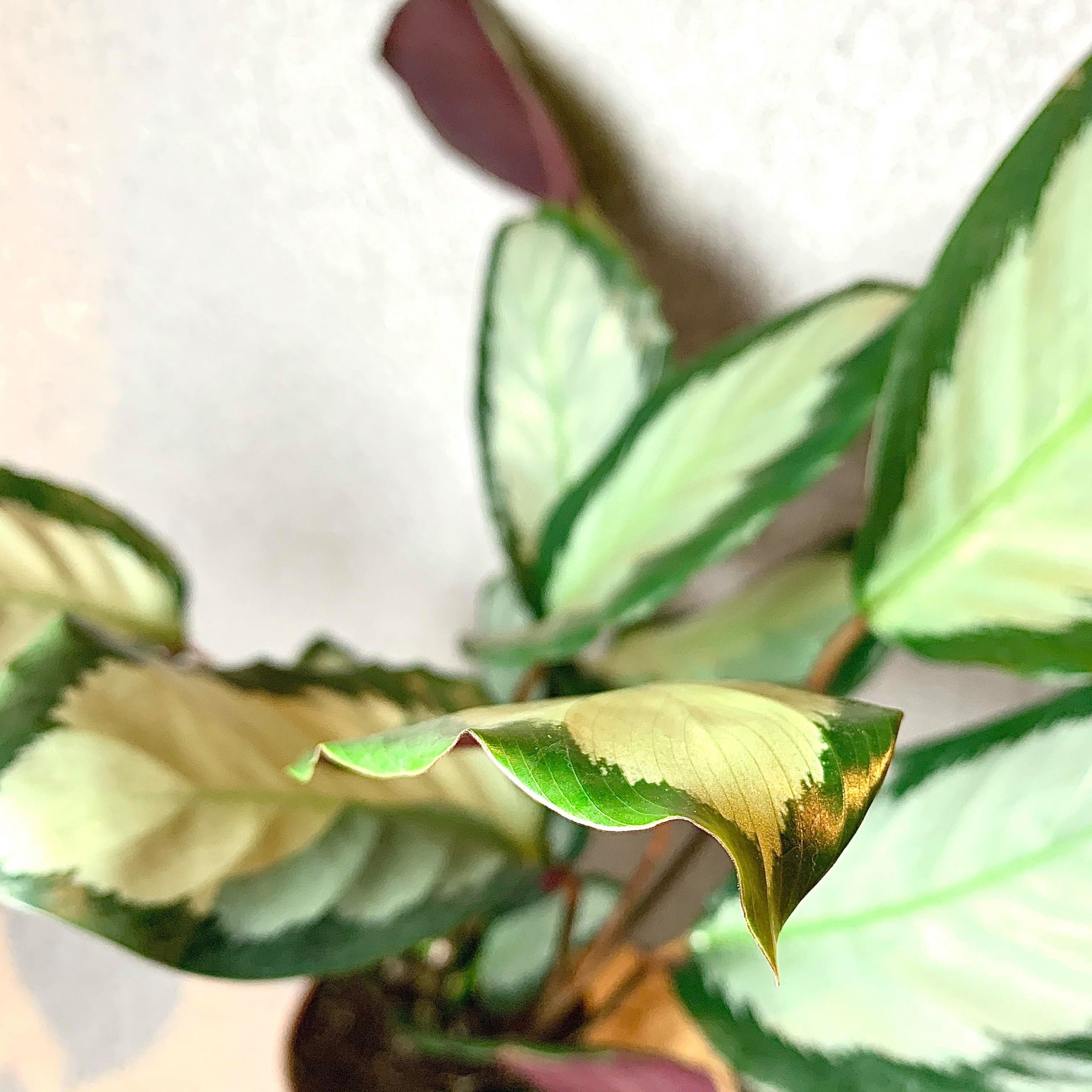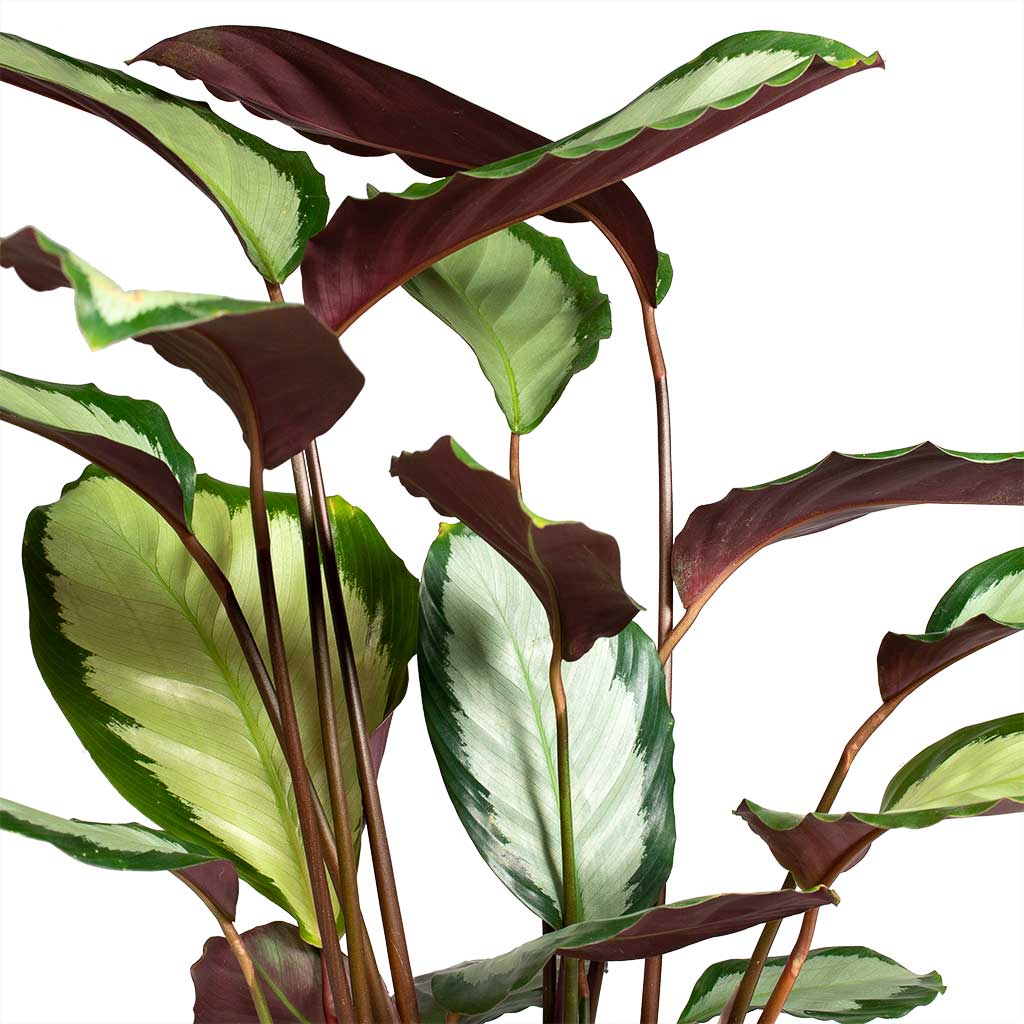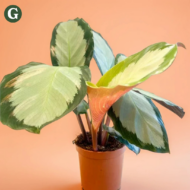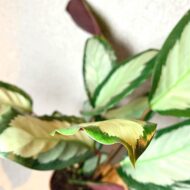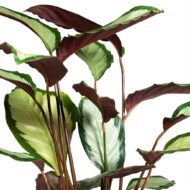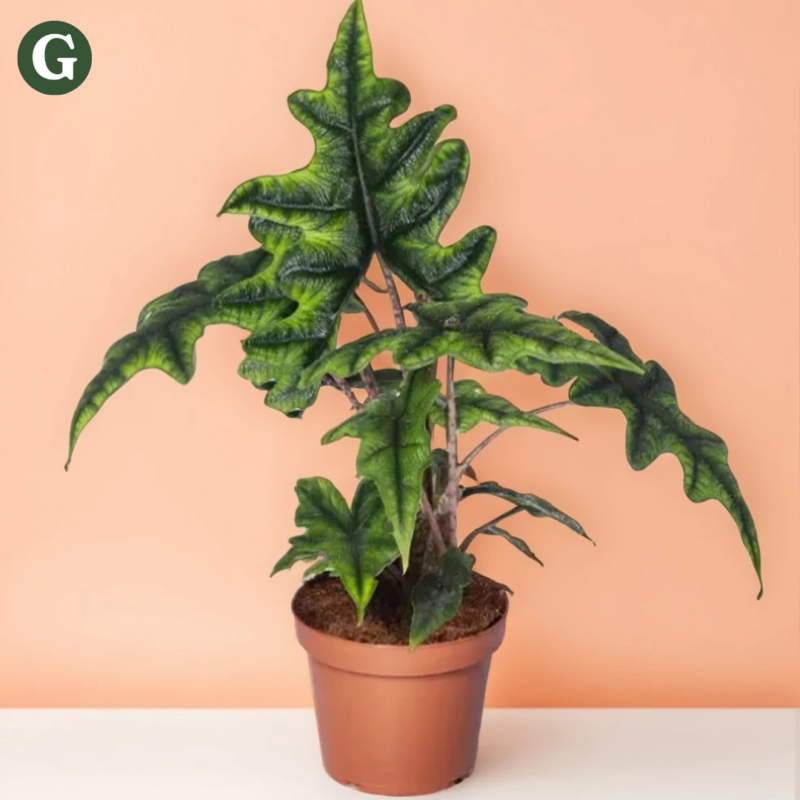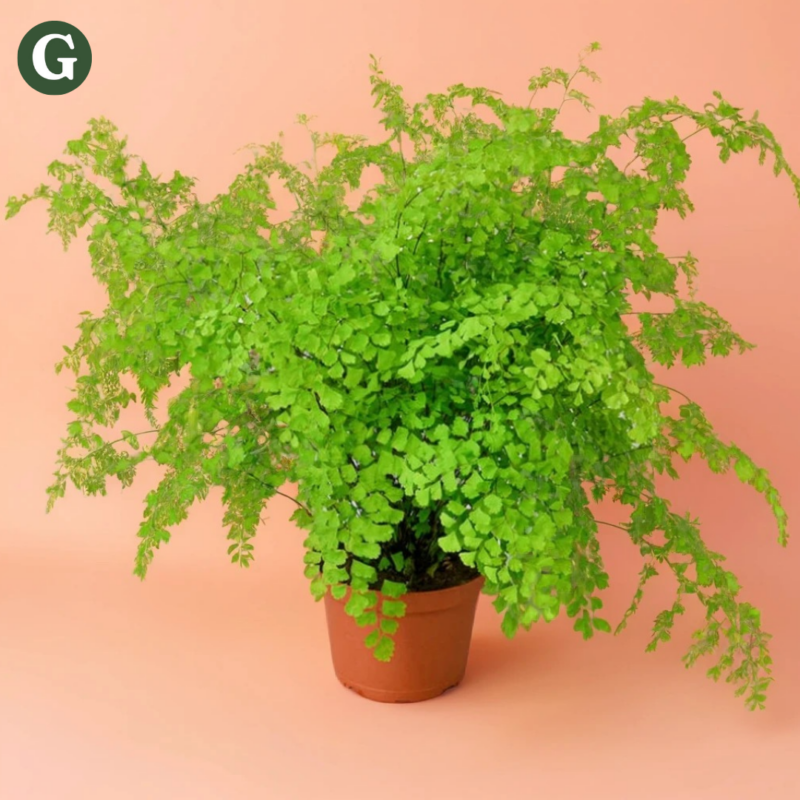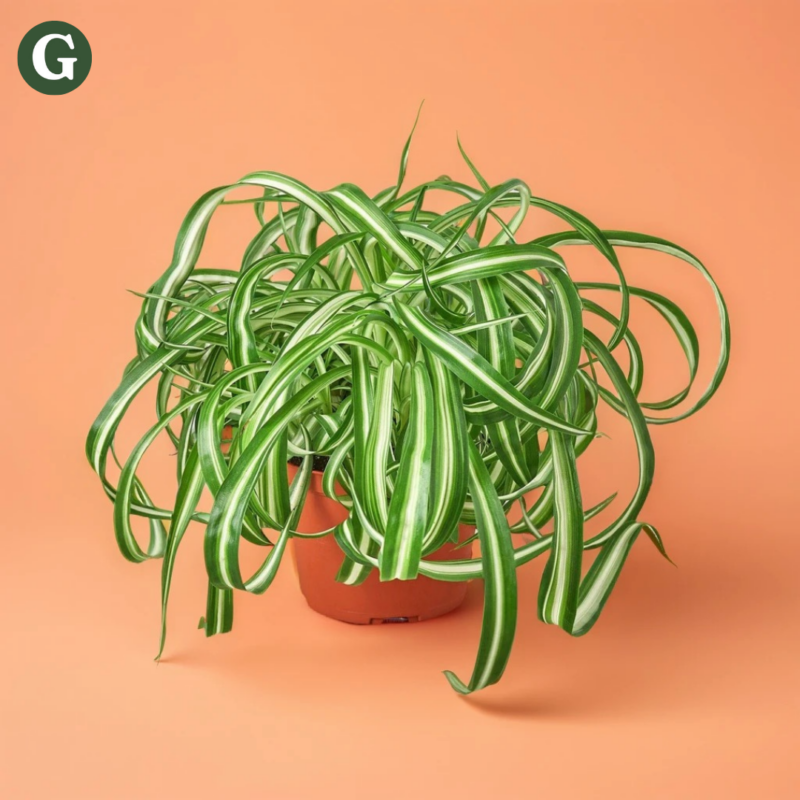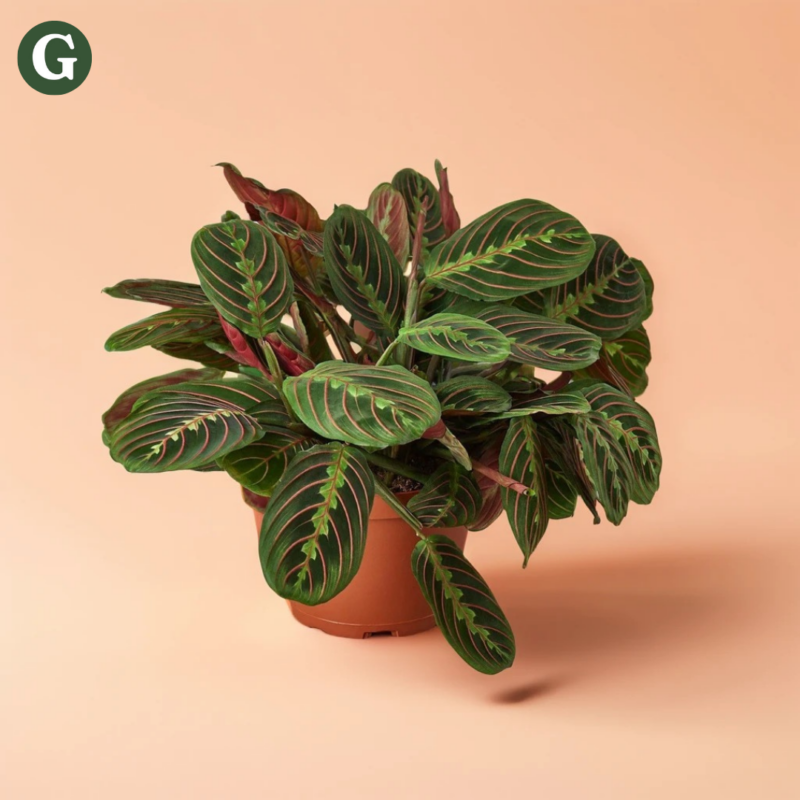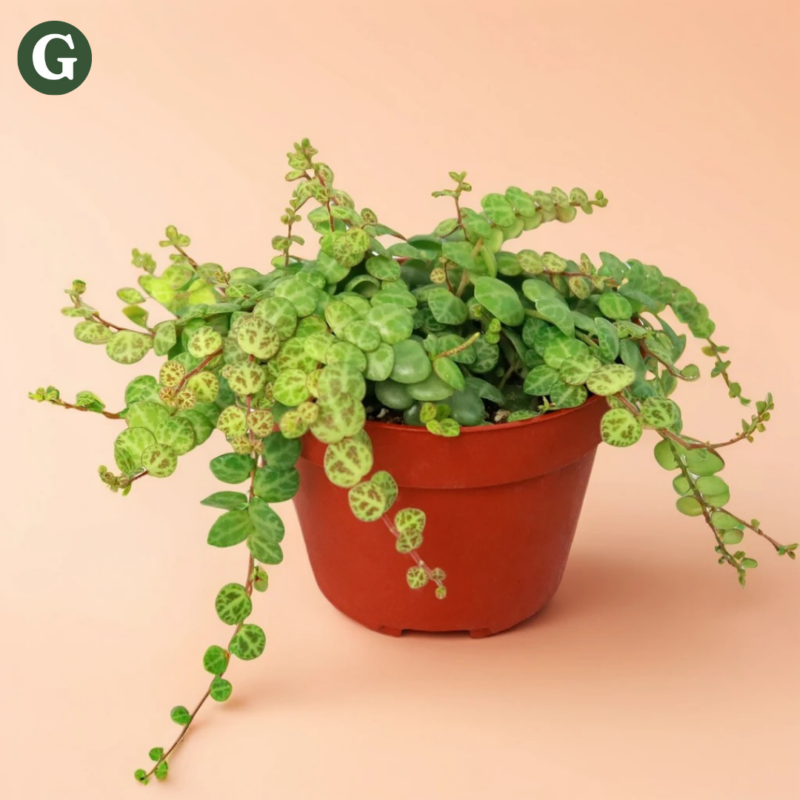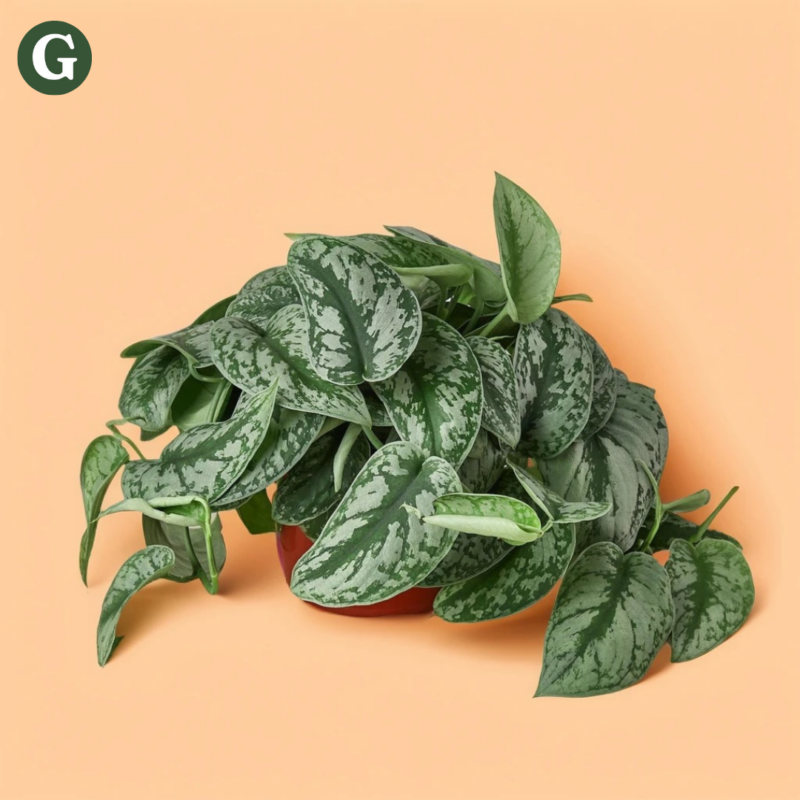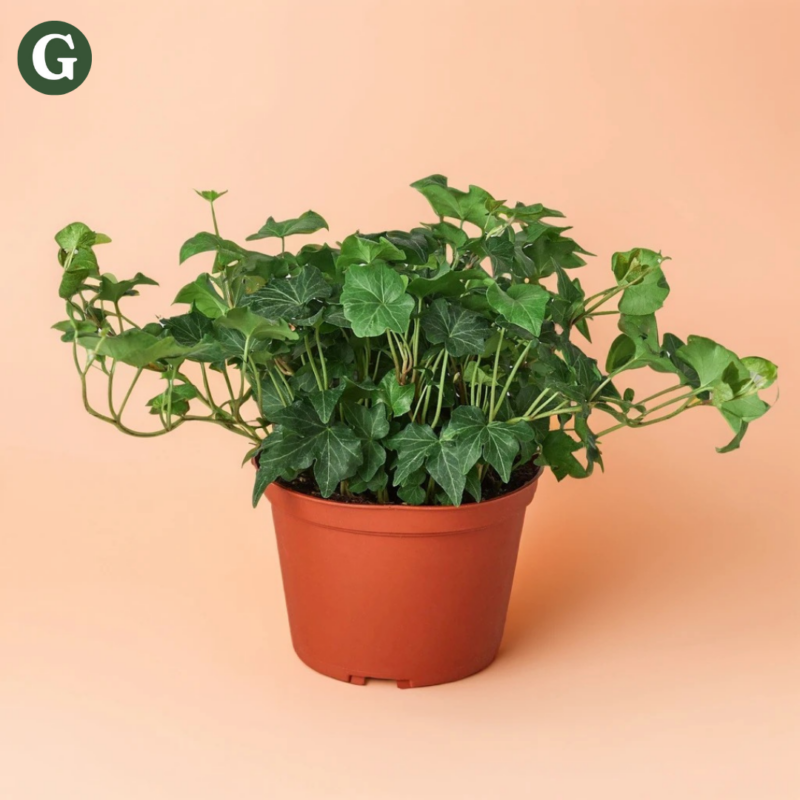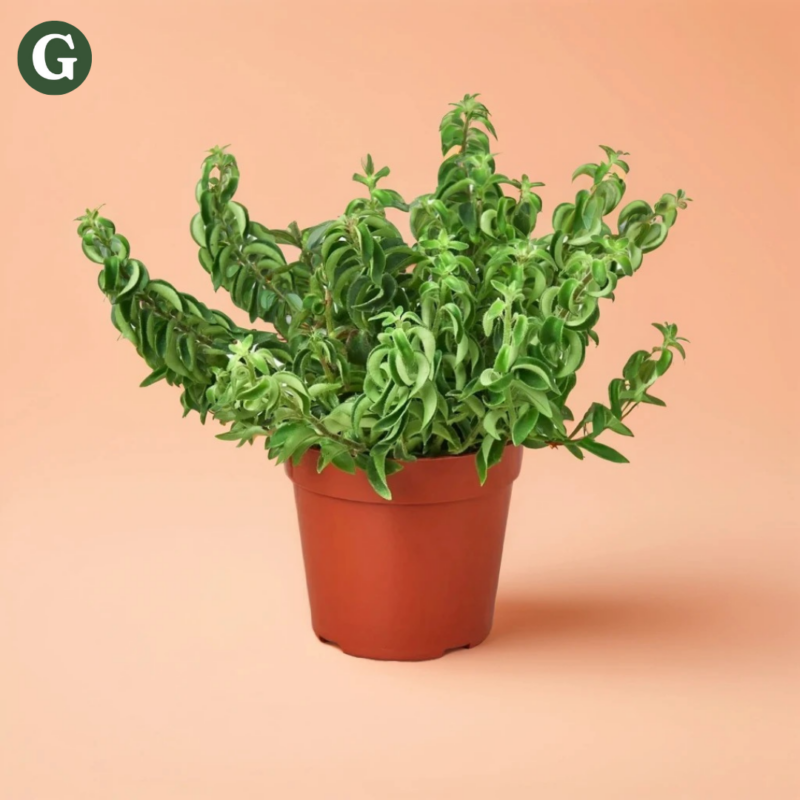Calathea Picturata
Botanical Name: Calathea picturata, Goeppertia picturata argentea
Common Name(s): Calathea Picture, Silver Variegated Calathea, Silver Prayer Plant
The Calathea Picturata is a stunning and visually striking variety of the Calathea family. Known for its eye-catching foliage, this plant features large, oval-shaped leaves with bold, contrasting patterns. The upper side of the leaves is typically a deep green, adorned with white or silver markings that resemble the stripes or patterns found on a zebra or peacock feathers, hence its common names. The undersides of the leaves are often a deep purple, creating a dramatic contrast to the lighter, patterned tops. The unique coloration and intricate design of the leaves make it an excellent choice for a statement plant in any humid indoor space.
Native to the tropical rainforests of South America, the Calathea Picturata thrives in warm, humid conditions and prefers bright, indirect light. Direct sunlight can scorch its delicate leaves, so it's best to keep it in a spot where it receives filtered or diffused light. While it can tolerate lower light levels, its growth will be slower, and the vibrant leaf patterns may fade. The ideal temperature range for this plant is between 65-80°F (18-27°C), and it should be kept away from cold drafts or sudden temperature fluctuations.
Humidity is key to keeping the Calathea Picturata healthy, as it thrives in environments with 50% humidity or higher. If the air is too dry, the edges of the leaves may curl or turn brown. Regular misting or placing the plant near a humidifier can help maintain the necessary moisture levels in the air. Additionally, it's best to water with room-temperature distilled or rainwater to avoid the chemicals found in tap water, which can cause leaf damage.
This Calathea variety prefers consistently moist, well-draining soil, but care should be taken not to overwater, as it is susceptible to root rot. Allow the top inch of soil to dry out between waterings, ensuring the roots aren't sitting in water.
Like other Calatheas, this variety exhibits nyctinasty, a fascinating phenomenon where its leaves fold up at night and reopen during the day in response to light, adding an extra touch of movement and life to the plant.
Note: The Calathea Picturata is non-toxic to both pets and humans, making it a safe choice for households with animals or small children.
Care Insights & Expert Tips
- Sensitive to some chemicals: This plant is generally sensitive to chemicals like chlorine and fluoride found in tap water. Distilled or rain water is recommended.
- "Prayer Plant" Behavior: The picturata exhibits nyctinasty, meaning its leaves move throughout the day. They raise their leaves at night, resembling praying hands, and lower them during the day.
- Fertilize once a month: Feed your plant with a balanced liquid fertilizer diluted to half strength once a month during the growing season.
- Repot every 1-2 years: Repot every 1-2 years or when the plant becomes root-bound. Choose a pot that’s only slightly larger than the current
- Avoid cold drafts: Keep your Calathea away from cold drafts and sudden temperature changes.

Visit our plant care library
Find essential tips to keep your plants thriving, vibrant, and healthy.

